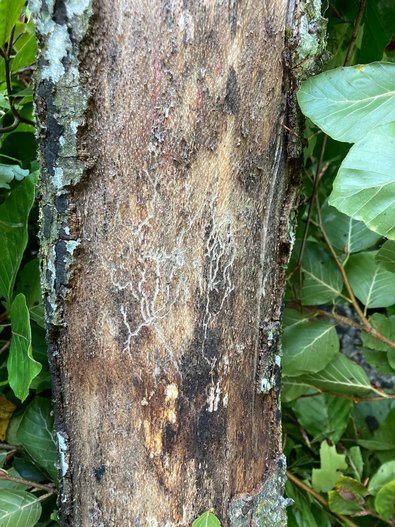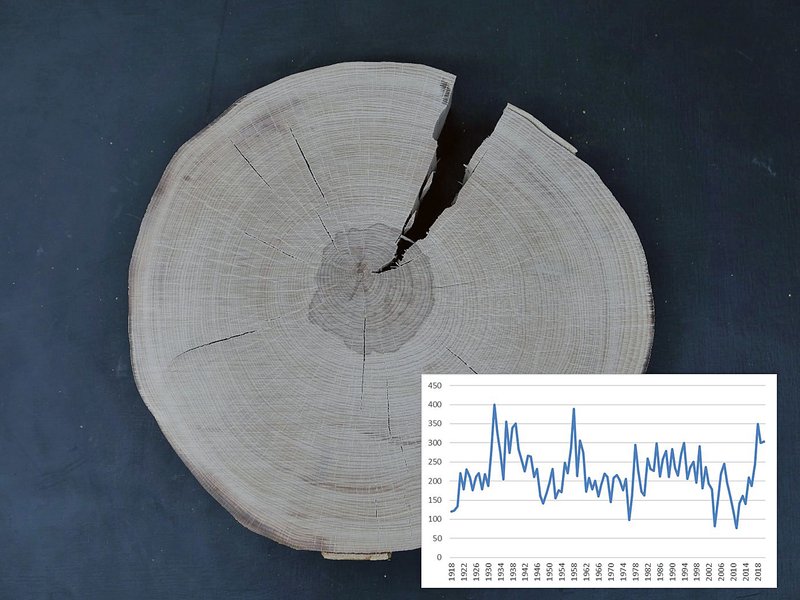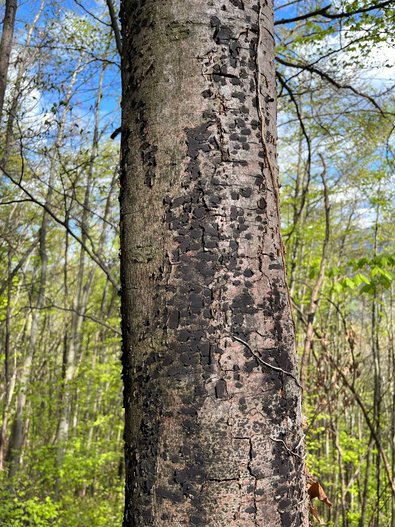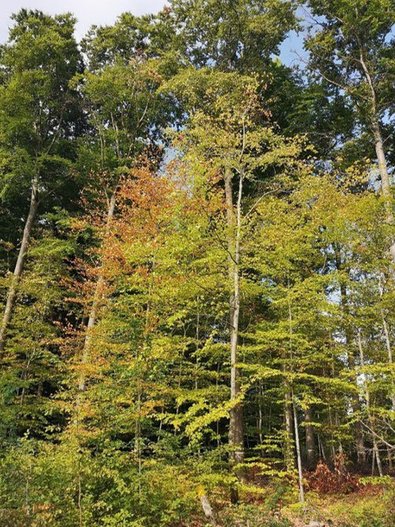Research on beech vitality reduction
The forest is doing poorly in many places – where we could expect full, green crowns in summer, beech trees are showing a noticeable loss of foliage and yellowing after the past years with constant and unusual periods of heat and drought. Dying branches interfere with a healthy crown structure, break out of the crown and can thus cause further damage. Not least, they pose a threat to forest visitors. The beech forest – an ailing patient!?
Forests of this kind pose ever greater problems for experts – how can the conservation and sustainable management of stands be achieved? How is the condition of damaged beech stands developing? What opportunities do we have to mitigate the loss of vitality and create more vibrant, sustainable structures with the beech tree in the future?
At the Forest Research Institute Baden-Württemberg (FVA), a number of approaches and investigations take a closer look at these issues.
Fungus causes rot
Periods of heat and drought cause latent pathogens living in the bark and wood of beech trees to realise their harmful potential. These pathogens include, among others, the fungus genus Biscogniauxia. The species Biscogniauxia nummularia (also known as beech tarcrust) is one of the most frequently isolated fungi from diseased beech tissue in Baden-Württemberg. The fungus causes bark necrosis and wood rot (Figs. 2a and b), which lead to tree branch breakage and loss of stability.
Therefore, the Forest Protection department of the FVA determines, under controlled conditions, the decay dynamics and rate of wood decomposition of two of these Biscogniauxia species in order to assess the development of damage to living trees (Fig. 2c). It can be assumed that such warmth-loving Biscogniauxia species could become a serious pest for existing stands of the European beech, Tree of the Year 2022, as climate change progresses.

Figure 2c: Using fungal isolates of beech tarcrust from infected wood, rates of wood decomposition on beech wood specimens are determined under laboratory conditions (All photos: FVA BW/Grüner).
Slime flux, broken branches and insect damage
Dying crowns, inadequately leafed branches, sunburn and peeling bark or slime flux – insect infestations can significantly affect the beech as well. Trees weakened by drought easily fall prey to the small beech bark beetle or beech splendour beetle, from which they often can hardly recover. In addition to drought, leaf feeding by caterpillars of various butterfly and moth species such as the gypsy moth and frost moth, for example, or by weevils such as the beech leaf-miner beetle, can also predispose beech trees to an infestation of bark-breeding beetles.
Overall, fungal and beetle infestations worsen the already drought-related damage to beech trees, so that they may not prove resilient.

Figure 3a: Galleries of the small beech bark beetle can be seen under the bark, affecting the sapwood. In the picture, black fruiting bodies of beech tarcrust are also visible on the bark.

Figure 3b: Slime flux and exposed gallery of the small beech bark beetle on the trunk.
Natural regeneration is not enough
In the summer of 2022, observations and reports of growth anomalies and symptoms of die-back due to drought also increased in naturally regenerated beech stands (Fig. 4a). Observations have shown that after a long summer drought, locally abundant rainfall from mid-August onwards has again led to favourable growing conditions and thus to renewed shoot formation. These anticipated bud shoots and shoot formations, which are actually not intended to sprout until the following spring (prolepsis), can be particularly susceptible to frost due to insufficient lignification (Fig. 4b).
The observed mortality can be explained by the persistent and recurrent climatic extremes of recent years and a location that is unfavourable for the beech. The data collected in this context and laboratory samples retained by the FVA will be beneficial for further research.
Reduced branching of crowns
A deterioration in the branching structure of the crowns and thus in the long term also poorer foliage seem to affect the lower altitudes first. Beech sites at higher elevations react with a delay. Evaluations of the winter and summer ratings in the experimental areas in Baden-Württemberg show that damage in 2021 and 2022 is at a similar level and is predominantly class 2 (moderately damaged). Another level higher would lead to classification in damage level 3 with severe crown defoliation, leading to dieback of the beech trees in the long term. Only follow-up images can show whether this scenario will occur.
Orthophotos: the view from above on beech mortality
The salvaging of beech wood because of damage increased rapidly in recent years. It has remained at a very high level since and was never previously measured. However, the figures need to be interpreted cautiously: Not all the beech trees removed have died completely at the time of harvesting. This is often done before due to traffic safety and occupational safety. Since the dying process is more protracted compared to, for example, conifers infested by bark beetles, the high levels of damaged wood salvaging in 2020 and 2021 are mostly due to damage from previous years. Thus the actual mortality of beeches is difficult to estimate based on timber use data. Therefore, it was examined again in more detail under the state’s Forest Emergency Plan Project for Beech Resilience at the FVA. In order to describe the condition of unmanaged beech forests, four protective forests in Baden-Württemberg were examined with a drone in July 2021. The resulting orthophotos were evaluated for crown defoliation and mortality (Fig. 6).
Both collectives were examined to support statements on differences between managed and unmanaged beech forests. The result: In comparison, the differences in mortality are minor.
Growth rings offer clues
The recognised signature years for the beeches were identifiable on all the discs (Fig. 7). Losses in growth after unusually hot and dry years were noticeable to different degrees at all locations. In addition to drought and location, age and, to a certain extent, tree height and social position also played a role. A connection between fructification and reduced growth has been found as well.

Figure 7: Depending on the area of origin, the sample trees have reacted differently to the drought stress of the last three years. However, all trees show a drop in radial growth in at least one of the last three years. The reference years 1976 and 2003 (signature years) were identifiable on all discs. Particularly in years with strong fructification, drops in growth are evident (FVA BW/Eurich).
- To the FVA information leaflet Is the beech running out of steam (in German)?
- You can order all FVA information leaflets as well as the associated ring binder here.











